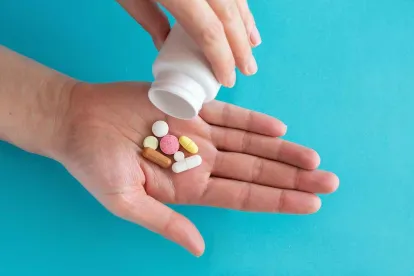It’s finally here – the Drug Pricing Plan that President Biden ordered the Department of Health and Human Services (HHS) to produce by the end of August (the “Plan”) was released publicly by the Administration on September 9, 2021. The Plan makes it clear that the Biden Administration supports aggressive action to address rising drug prices, including controversial actions such as allowing HHS to negotiate the cost of Medicare Part B and D drugs. The Plan also outlines a set of administrative actions that HHS and its operating agencies can take, without the need for intervention by Congress. A notable gap in the Plan, however, is the Administration’s potential approach to manufacturer rebates and the Rebate Rule.
As we blogged about a couple of months ago, HHS was directed to develop a comprehensive plan to “combat excessive pricing of prescription drugs and enhance domestic pharmaceutical supply chains, to reduce the prices paid by the Federal Government for such drugs, and to address the recurrent problem of price gouging” as part of President Biden’s Executive Order on promoting competition in the U.S. economy (see prior post here). In response to this expansive request, the three guiding principles HHS articulates and then fleshes out in the newly released plan are to (1) “make drug prices more affordable and equitable for all consumers and throughout the health care system”; (2) “improve and promote competition throughout the prescription drug industry”; and (3) “foster scientific innovation to promote better health care and improve health.”
With respect to legislative proposals aimed at advancing these laudable principles, the Administration’s Drug Pricing Plan calls for the implementation of several long-standing policy goals of progressive Democrats – most notably to allow for “drug price negotiation in Medicare Parts B and D, with those negotiated prices also available to commercial plans … and employers who want to participate.” Although this is not a new proposal, it is controversial, with drug manufacturers and the Pharmaceutical Research and Manufacturers of America (PhRMA) arguing that government negotiation of drug prices will reduce biopharmaceutical innovation and limit the amount and types of pharmaceuticals available to seniors.
Other requests that HHS makes to Congress include:
-
Medicare Part D reform, to include a cap on catastrophic spending to protect beneficiaries from unaffordable out-of-pocket costs
-
Legislation to slow price increases over time on existing drugs
-
Legislation to prohibit “pay-for-delay” agreements and other anti-competitive practices by biopharmaceutical companies
-
Creating policies in Medicare Part B to increase the prescribing of biosimilars
Congress is also being tasked with passing “legislation to speed the entry of biosimilar and generic drugs, including shortening the period of exclusivity.” Along with most of the other reform proposals contained in the HHS Drug Pricing Plan, this request is sure to meet with opposition from the biopharmaceutical industry, both for innovator and follow-on products. In particular, the 12-year biological product exclusivity provisions enacted in 2010 as part of the Biologics Price Competition and Innovation Act (BPCIA), which has generally been unpopular with certain stakeholders that felt that period was too long even back then when the marketplace was much different, is not the only regulatory exclusivity that is called out in the HHS plan. For example, proposals to make “technical changes” to the 180-day exclusivity period awarded to the first-to-file generic firm in order to reduce the ability to delay additional generics from entering the marketplace also make an appearance in the Drug Pricing Plan.
In terms of administrative actions that HHS and its various agencies, including the Food and Drug Administration (FDA) and the Centers for Medicare & Medicaid Services (CMS), could take independently of Congress to promote competition and reduce costs, the Administration posits the following ideas:
-
Testing models that use value-based payments in Medicare Part B;
-
Testing models that provide additional cost-sharing support to Medicare Part D Low-Income Subsidy Beneficiaries for using biosimilars and generic drugs;
-
Testing total cost of care models in Medicare to determine whether they produce changes in drug utilization, reductions in total spending, and improvements in patient outcomes
-
Collecting data from insurers and pharmacy benefit managers (PBMs) to improve transparency about prices, rebates, and out-of-pocket spending on biopharmaceutical products; and
-
Continuing to implement FDA’s Biosimilars Action Plan and Drug Competition Action Plan, which were developed and published during the Trump Administration, and further clarifying the approval framework for generic drugs to make the process more transparent and efficient.
The complete HHS Drug Pricing Plan is available for review here, and a high-level fact sheet is available here.
Many of these proposals focus on the use of the Center for Medicare & Medicaid Innovation’s demonstration authority. These proposals come on the heels of MedPAC’s June 2021 recommendation to CMS to limit and streamline the number of alternate payment models, as the volume of models may reduce their effectiveness due to overlapping participation by providers. Although the models discussed above addressing drug pricing do not fall within the bucket of alternate payment models, there may be a general weariness of demonstration projects.
Of particular note, the Plan’s discussion of manufacturer rebates and their potential role in driving up drug prices is limited. The primary discussion of rebates in the Plan is in the section on “Drug Price Transparency,” in which HHS states it will use data collected through new transparency laws to gain a “better understanding of….the impact of prescription drug rebates, trends in prescription drug utilization, and the impact of prescription drug rebates on premiums and out-of-pocket costs.” With the January 1, 2023 implementation date of the so-called “Rebate Rule” still looming, this language provides little insight on whether the Biden Administration may take action to stop its implementation. The lack of discussion of rebates in the Plan may mean the Administration is going to continue to take a “wait-and-see” approach on the Rebate Rule. It will wait to see if Congress will be able to pass meaningful drug pricing reform this session or wait to see what (if anything) the data being submitting through the new transparency laws show.
Finally, another one of the directives in President Biden’s Executive Order on promoting competition tasked FDA with continuing to implement the regulatory scheme to allow for the importation of prescription drugs from Canada and with supporting States and tribal governments that want to take advantage of that option. To respond to the President’s request, at the end of August FDA updated its website content on human drug importation to provide more information on the available Section 804 Importation Program and to encourage States and Tribal governments to engage with the agency on any plans for developing and submitting such proposals for review. Stakeholders will certainly continue to watch for when and how such importation programs are implemented, as well as what their financial effects may be on in the jurisdictions that go through the onerous requirements for setting up such a program for their residents.






 />i
/>i

